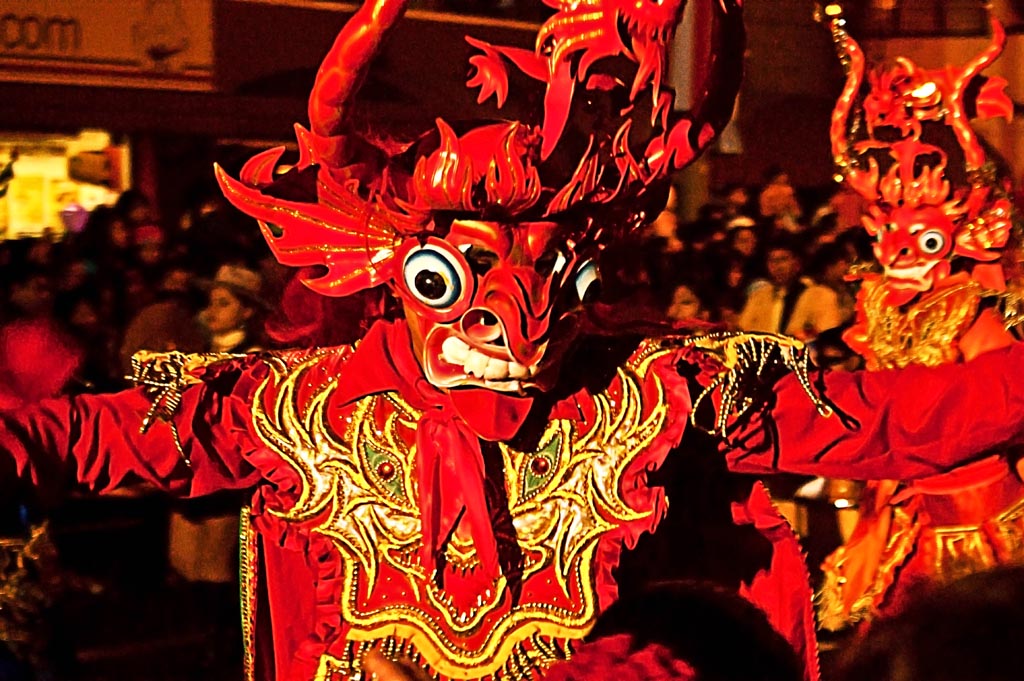
Puno masks
Another of the standards of Peruvian crafts are the wearing masks, used since time immemorial to be used as a connection with the sacred and to link with the terrain of the mystical. In Peru, its association with traditional dances is deep. Many dances such as the diablada, the morenada and the tuntada incorporate masks to characterize their characters.
From pre-Hispanic Peru, the masks of the Chimú and Mochica cultures, made of gold, silver and copper. Currently they are made with various materials such as wood, plaster, sheepskin, tin, wire mesh and glued fabric.
En Puno, the masks are an essential part of the festival of the Virgen de la Candelaria. Among all, the best known is the mask of the devil king, which wears a golden crown, lacks a chin and has 7 small heads with horns and dragons, which represent the capital sins. The devil's woman wears a reptile decoration and two horns on her golden hair. Both masks are made of brass. Another recognized figure is the black king, a character from the morenada, who carries a pipe between his teeth, has a dark face, a thick lower lip and a broad nose.
En Cuzco, the masks are part of the Fiesta de la Virgen del Carmen, in Paucartambo. The masks are made on the basis of plaster and wet paper. The masks are noted for their grotesque features of white men with blue eyes, mustaches, huge noses, and polka dots. You can also see masks of huge smiles and tongues out as well as black masks with golden features and blue tears. Some of the dances that include the use of masks are the contradanza, caporal and machu.
En Cajamarca, the masks are part of the carnivals. The masks are made on the basis of wire and with mask shapes.
Further information: Catacaos: Capital of crafts and Peruvian seasoning
Photo: Digital Eye